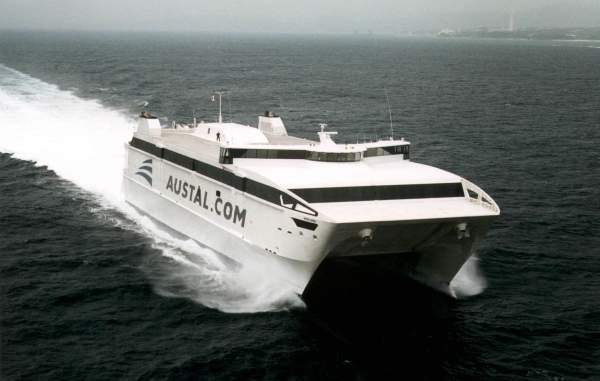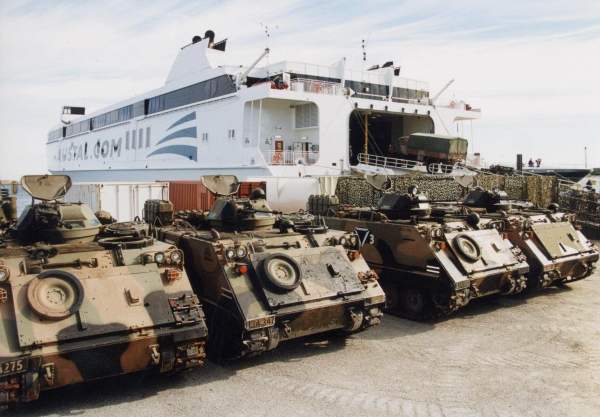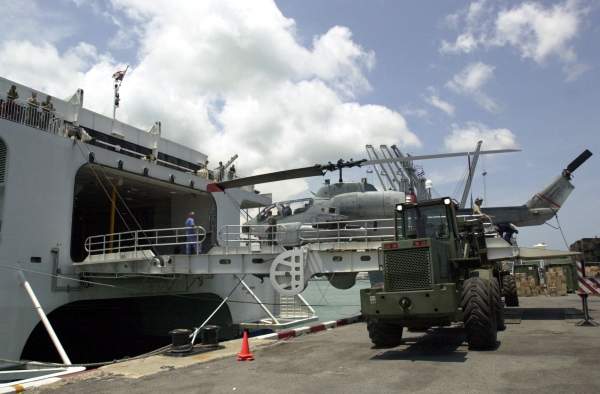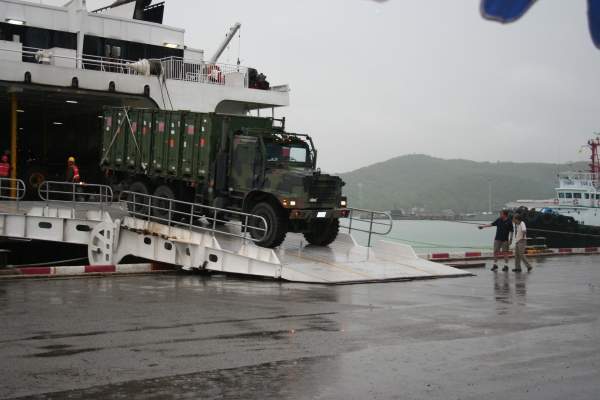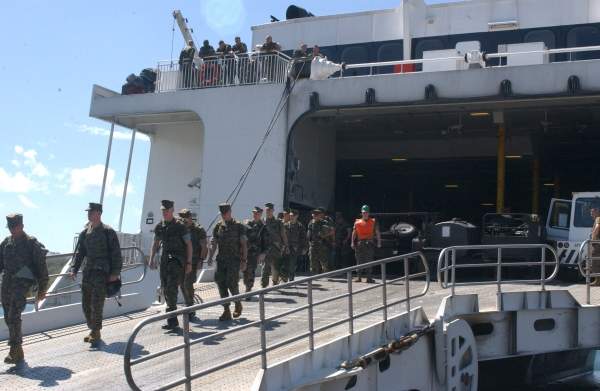Westpac Express (HSV-4676) is an environmentally-friendly ship in the non-nuclear navy. The 101m long aluminium high-speed vessel (HSV) was built by Australian ship designer and shipbuilder Austal in 2001.
The HSV has been in operation with the US Marine Corps – the Third Marine Expeditionary Force (III MEF) and the Military Sealift Command (MSC) – for the last 11 years. She is one of MSC’s two HSVs and is part of the 30 ships in MSC’s Prepositioning Programme.
In July 2001, the HSV was leased to III MEF for a proof of concept (POC) period. During that period, the vessel turned out to be very productive and was consequently chartered by the MSC for three years in January 2002.
The lease period was subsequently extended to February 2007. After competitive tenders, the vessel was again chartered in 2005 for a period of 55 months (until February 2012).
In December 2011, the HSV was re-chartered by the US Marine Corps to continue the current charter. The new charter will commence in February 2012 and will continue from six months to two years. The new charter is priced at approximately $30.3m if all options are put to use.
HSV design features and capability
Westpac Express can be categorised as a roll-on / roll-off (RO/RO) passenger ferry / cargo freighter vessel. The vessel’s body is made of aluminium alloy and is built on two hulls.
The 2,000t vessel has bulbous bow and round bilge. Her speed at 90% MCR (maximum continuous rating) is 36kt. Fuel consumption rate is 5.3t/h.
The overall length of the HSV is 101m, while the waterline length is 86.2m. Moulded beam, moulded hull depth and draught are 26.7m, 9.4m and 4.3m respectively.
The vessel features two vehicle and cargo decks with a combined storage area of 3,066m2. There is also a personnel deck which can accommodate 26 crew members and can seat 900 personnel.
The HSV can quickly deploy a complete battalion of up to 970 troops and 550t of additional stuff such as vehicles and equipment in a single load, providing time and cost benefits.
The vessel’s contribution in time and money savings can be gauged from the fact that it would require some 14 to 17 military aircraft to ship the same number of troops and equipment.
Over the years, the HSV has been transiting waters all across the globe and has carried almost every piece of equipment in the Marine Corps armoury. During her POC period, the vessel was used to transport civilian fire trucks to test the ability of the Marine Corps in dealing with humanitarian assistance or disaster relief.
Operations / missions
Westpac Express played an important role during the 25th Cobra Gold annual exercise held in Thailand in May 2006. The exercise, which ran from 15 to 26 May 2006, was participated in by the US, Thailand, Singapore, Japan and Indonesia.
The vessel provided an extensive logistics support and transported US Marines and their equipment from Okinawa in Japan to Thailand.
From the III MEF base at Camp Hansen in Okinawa, the vessel helped to deploy more than 175 marines and sailors, plus their equipment, to Thailand.
The vessel has also been used to transport service members for the Foal Eagle Field Training Exercise (FTX) held between the armed forces of the US and South Korea.
The vessel has been used by the US Corps in many humanitarian operations, such as the 2011 Tōhoku earthquake and tsunami in Japan and 2005 Thailand tsunami relief efforts.
HSV propulsion system
The HSV is powered by four Caterpillar 3618 marine diesel engines driving four Rolls Royce KaMeWa 125 SII waterjets via four Reintjes VLJ 6831 gearboxes.
Each of the four engines is capable of producing 7,200kW at 1,050rpm. Average piston speed of the engine is 10.5m/s, while engine firing pressure is 185bar.
The Global Naval Surface Combatants and Warfare Systems Market 2011-2021
This project forms part of our recent analysis and forecasts of the global naval surface combatants and warfare systems market available from our business information platform Strategic Defence Intelligence. For more information click here or contact us: EMEA: +44 20 7936 6783; Americas: +1 415 439 4914; Asia Pacific: +61 2 9947 9709 or via email.

